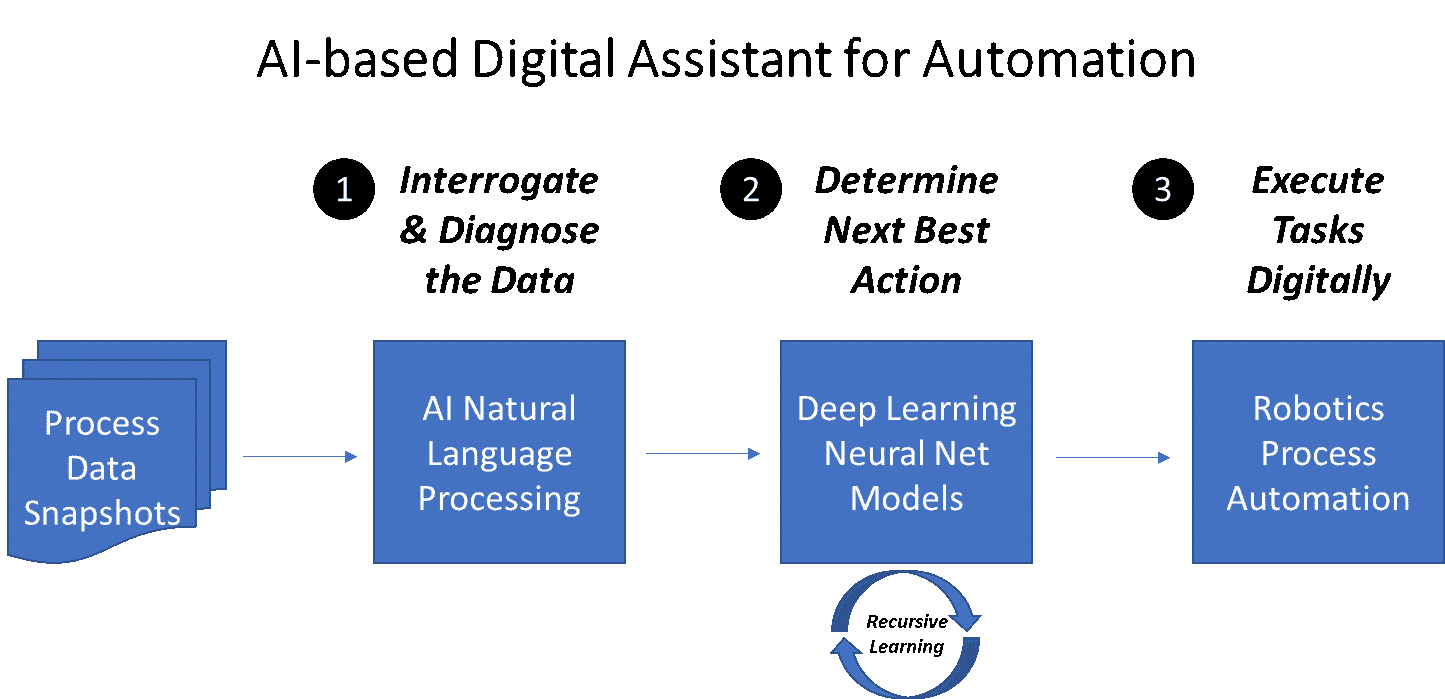Deploying AI and machine learning to automate repetitive tasks performed by knowledge workers, essentially building digital operations assistants, requires new types of data to be captured than we are accustomed to.
For machine/deep learning algorithms to be trained to assess and solve problems like human knowledge workers do to perform a task, the algorithms require datasets that are snapshots of the information that a human operator would be working with to perform that task.
Ideally, the models would be trained using data snapshots the operator had ‘before’ and ‘after’ each step they performed. The machine learning would compare the snapshots to trace exactly what the human did. The datasets would ideally include both positive and failed scenarios, so the models can more clearly differentiate the steps that led to the task being performed correctly.
Once trained, these AI-powered digital assistants can demonstrate cognitive brain-like intelligence to determine what to do with new data not previously seen, and they will continue recursive learning as more data comes in. Robotics Process Automation (RPA) software can then be used to perform the actual execution of the work guided by the AI algorithms. (See illustration below)
In an upcoming post, we’ll expand the conversation about how AI, machine learning and RPA can be brought together for a dynamic, far-reaching automation solution.
We’d like to discuss this further with you – LET’S TALK!

